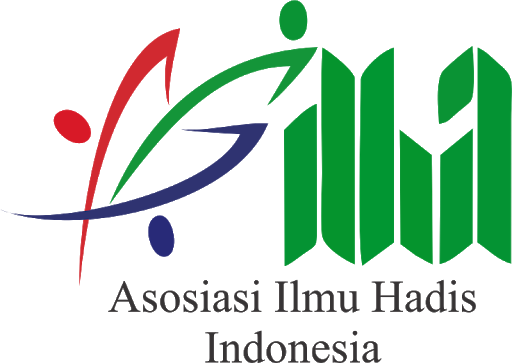Living Hadith in the Practice of Distancing the Line (Ṣaff) in Congregational Prayers during Corona Pandemic
DOI:
https://doi.org/10.14421/livinghadis.2020.2284Keywords:
Physical Distancing, Lines (Saff), Distanced, Covid-19, al-Muḥāfaẓa ‘alā an-NafsAbstract
This is descriptive, qualitative research that explains the practice of distancing the lines (ṣaff) in congregational prayers during the corona pandemic. This research employs phenomenological perspective to do the analysis on the data, particularly the interviews published in online media. Another side of the analysis is the inductive and deductive technique. This research focuses on the ways in which that practice is put into action, the underlying factors, and the impact it poses to the society, particularly the way they face the pandemic. It argues that the practice is a sort of realization of physical distancing to prevent the spreading of the virus and at the same time the real attempt of Indonesian Muslims to observe one of the principal goals of sharia, that is al-muḥāfaẓa ‘alā an-nafs.
 Abstract viewed: 1640 times
|
Abstract viewed: 1640 times
|
 PDF downloaded = 1272 times
PDF downloaded = 1272 times
 LIVING HADIS DALAM PRAKTIK SAF RENGGANG SAAT PANDEMIK CORONA downloaded = 0 times
LIVING HADIS DALAM PRAKTIK SAF RENGGANG SAAT PANDEMIK CORONA downloaded = 0 times
References
Al-Nawawi (2011). Riyadhus Shalihin, terj. Hakim, Arif Rahman & Nurtsani, Pipih Imran. Solo: Insan Kamil.
Al-Qazwaini (1313 H). Sunan Ibn Majah. Juz 7. Kairo: Mauqi’ Wizarat al-Auqaf al Mishriyyah.
Ardi, Sahibul (2017). Konsep Maslahah dalam Perspektif Ushuliyyin. An-Nahdhah. Vol. 10. No. 20.
BBC News Indonesia (2020). Virus corona: Di tengah wabah, apakah sebaiknya shalat berjamaah di masjid untuk sementara ditiadakan?. By (https://www.bbc.com/indonesia/indonesia-51971330).
CNN Indonesia – Makki, Shafir (2020). UAS Sebut Jaga Jarak di Tengah Corona Sesuai Sunah Rasul. By (https://www.cnnindonesia.com/nasional/20200321071810-20-485521/uas-sebut-jaga-jarak-di-tengah-corona-sesuai-sunah-rasul?).
CNN Indonesia – Novelino, Andry (2020). Percaya MUI, UAS Patuh Larangan Shalat di Masjid saat Corona. By (https://www.cnnindonesia.com/nasional/20200321085425-20-485528/percaya-mui-uas-patuh-larangan-shalat-di-masjid-saat-corona).
Darussalam, A (2016). Indahnya Kebersamaan dengan Shalat Berjamaah. Tafsere. Vol. 4. No. 1.
Diskominfo Jateng (2020). Tetap Adakan Shalat Jumat, Pihak MAJT Cek Suhu Tubuh Jemaah. By (https://jatengprov.go.id/beritaopd/tetap-adakan-shalat-jumat-pihak-majt-cek-suhu-tubuh-jemaah).
Fajriah, Wilda (2020). Ustaz Adi Hidayat: Cukup Kerjakan Sholat Berjamaah di Rumah. By (https://muslim.okezone.com/read/2020/03/30/330/2191017/Ustaz-adi-hidayat-cukup-kerjakan-sholat-berjamaah-di-rumah?page=2).
Fathurrahman, Faqih (2020). Warga Tetap Antusias Solat Berjamaah Walau MUI Sarankan Beribadah di Rumah. By (https://akurat.co/news/id-1049704-read-warga-tetap-antusias-solat-berjamaah-walau-mui-sarankan-beribadah-di-rumah).
HRW (2020). Indonesia: Little Transparency in COVID-19 Outbreak. By (https://www.hrw.org/news/2020/04/09/indonesia-little-transparency-covid-19-outbreak).
Huda, Saiful (2018). Shalat Jama’ah Memupuk Nilai Solidaritas. Tadris. Vol. 12. No. 2.
Jauhari, Ahmad., A.S, Asmaran & Faridah, Siti (2017). Hubungan Shalat Fardu Berjamaah dengan Kecerdasan Emosional pada Jamaah Mesjid al Jihad Banjarmasin. Jurnal Studia Insania. Vol. 5. No. 1.
Junaedi, Didi (2015). Living Qur’an: Sebuah Pendekatan Baru Dalam Kajian al-Qur’an (Studi Kasus Di Pondok Pesantren as-Siroj al-Hasan Desa Kalimukti Kec. Pabedilan Kab. Cirebon). Journal of Qur’an and Hadith Studies. Vol. 4. No. 2.
Kurnia, Kiki (2020). Ini yang dilakukan Masjid Salman ITB, Shalat dengan Distancing karena Darurat. By (https://www.galamedianews.com/bandung-raya/251123/ini-yang-dilakukan-masjid-salman-itb-shalat-dengan-distancing-karena-darurat.html).
Misbahuddin, Eko (2020). Hukum Shalat Berjamaah di Masjid dengan Shaf Renggang karena Wabah. By (https://wahdah.or.id/hukum-shalat-berjamaah-di-masjid-dengan-shaf-renggang-karena-wabah).
Mona, Nailul (2020). Konsep Isolasi dalam Jaringan Sosial untuk Meminimalisasi Efek Contagious (Kasus Penyebaran Virus Corona di Indonesia). Jurnal Sosial Humaniora Terapan. Vol. 2. No. 2.
Muslim (1334 H). Ṣaḥīḥ Muslim. Juz 2. Beirut: Dar al-Afaq al-Jadidah.
Nasri, Ulyan (2018). Shalat ditinjau dari Sudut Pandang Pendidikan, Sosial Dan Politik. al-Munawwarah: Jurnal Pendidikan Islam. Vol. 10. No. 2.
Rizki, Dwi (2020). Ustaz Abdul Somad Jelaskan Hukum Shalat Berjamaah dengan Jarak Shaf Satu Meter Antarjemaah. By (https://wartakota.tribunnews.com/2020/04/08/Ustaz-abdul-somad-jelaskan-hukum-shalat-berjamaah-dengan-jarak-shaf-satu-meter-antar-jemaah).
Rosmayanti (2020). Ribut-ribut Fatwa MUI, Felix: Jangan Anggap Shalat Jemaah Saat Ini Lebih Beriman, Ulama Lebih Tahu!. By (https://www.wartaekonomi.co.id/read277249/ribut-ribut-fatwa-mui-felix-jangan-anggap-shalat-jemaah-saat-ini-lebih-beriman-ulama-lebih-tahu).
Setiyawan, Iwan (2020). Upaya Pemerintah Menangani Pandemi Covid-19. By (https://kompas.id/baca/foto/2020/04/01/upaya-pemerintah-menangani-pandemi-covid-19).
Siregar, Ahlun Nazi & Zulfikri (2019). Shalat Sendiri di Belakang Shaf Perspektif Pendapat Imam An-Nawawi dan Ibnu Qudamah. Moefty Jurnal Perbandingan Mazhab dan Hukum. Vol. 4. No. 1.
Sulaiman, Abu Dawud (t.t.). Sunan Abī Dāwud. Juz 1. Beirut: Dar al-Kitab al-Arabi.
Suprayogo, Imam & Tobroni (2003). Metodologi Penelitian Sosial-Agama. Bandung: Rosdakarya.
Wijayanto (2020). Shaf Renggang, Jamaah dibagi Masker dan diperiksa Suhu Tubuhnya. By (https://radarsurabaya.jawapos.com/read/2020/03/21/184879/shaf-renggang-jamaah-dibagi-masker-dan-diperiksa-suhu-tubuhnya).
Yahya, Achmad Nasrudin (2020). Pemerintah Diminta Merespons Dunia Internasional yang Ragukan Indonesia Bebas Corona. By (https://nasional.kompas.com/read/2020/03/01/20212091/pemerintah-diminta-merespons-dunia-internasional-yang-ragukan-indonesia).
Yunus, Nur Rohim., & Rezki, Annissa (2020). Kebijakan Pemberlakuan Lockdown Sebagai Antisipasi Penyebaran Corona Virus Covid-19. Salam. Vol. 7. No. 3.
Zaharah., Kirilova, Galia Ildusovna & Windarti, Anissa (2020). Impact of Corona Virus Outbreak Towards Teaching and Learning Activities in Indonesia.” SALAM: Jurnal Sosial & Budaya Syar-i. Vol. 7. No. 3.
Downloads
Additional Files
Published
Issue
Section
License
- Authors who publish with this journal agree to the following terms:
- Authors retain copyright and grant the journal right of first publication with the work simultaneously licensed under a Creative Commons Attribution License that allows others to share the work with an acknowledgement of the work's authorship and initial publication in this journal.
- Authors are able to enter into separate, additional contractual arrangements for the non-exclusive distribution of the journal's published version of the work (e.g., post it to an institutional repository or publish it in a book), with an acknowledgement of its initial publication in this journal.
- Authors are permitted and encouraged to post their work online (e.g., in institutional repositories or on their website) prior to and during the submission process, as it can lead to productive exchanges, as well as earlier and greater citation of published work.
















